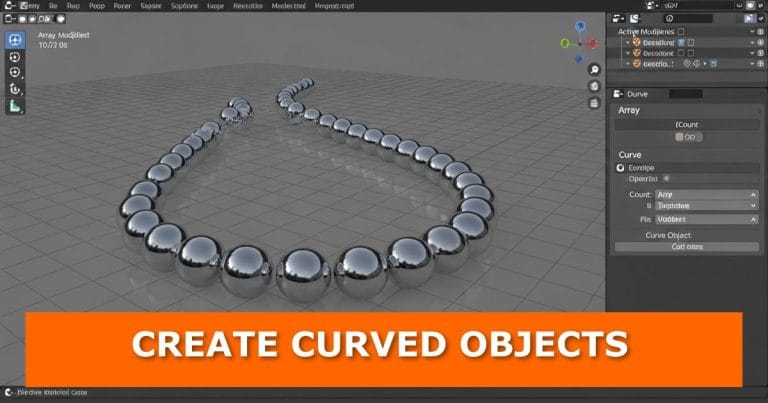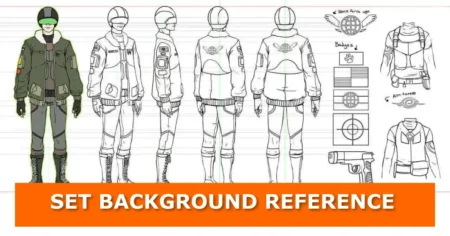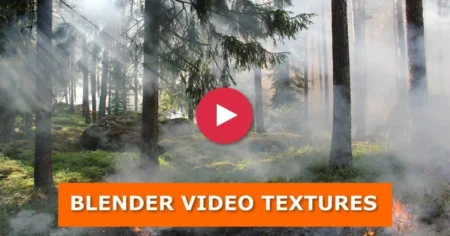If you’ve been sculpting and reshaping objects point by point in Blender, you’re missing out on one of its most powerful tricks. In this quick and direct guide, you’ll learn how to use the Array and Curve modifiers to create smooth, controlled forms without the tedious manual tweaking.
The Video Tutorial

This technique works great for cables, pipes, chains, or any repeating object that needs to follow a custom path.
Step 1: Start with a Clean Mesh
Before adding modifiers, make sure your base mesh has plenty of loop cuts. These cuts give your object enough geometry to bend smoothly along the curve later.
You can add them quickly using Ctrl + R and scrolling the mouse wheel to adjust the number of cuts.
Step 2: Add a Path Curve
Press Shift + A, go to Curve > Path, and drop it into your scene.
This curve will define the path your object will follow. Use Edit Mode to move and shape the curve points until you get the desired flow.
Step 3: Apply the Array Modifier
Select your mesh and add an Array Modifier from the Modifier tab.
Enable Relative Offset and make sure the offset direction matches the direction your mesh should extend. This modifier will duplicate your mesh along its local axis.
Step 4: Add the Curve Modifier
Next, add a Curve Modifier to the same object.
In the modifier settings, assign your path curve as the target. You might need to rotate or move your mesh to align it properly with the curve.
Once it aligns, you’ll see the mesh neatly follow the shape of the path.
Step 5: Fine-Tune and Multiply
Increase the Array Count until your object stretches across the full length of the path. You can adjust the curve anytime to reshape the entire object instantly.
That’s it—you’ve just created a controlled, repeatable structure in Blender using modifiers.
Explore Related Blender Tutorials
If you enjoyed this quick guide, you might find these helpful:
- Create Dynamic Cables in Blender
- Cut Perfect Circular Holes in Blender
- Straighten Loop Cuts in Blender
- Convert Curves into Meshes in Blender
- Fix Bevel Overlap Issues in Blender
Each of these guides builds on similar principles and will help you work faster and cleaner in your modeling workflow.
Keep the Creativity Flowing
Have you tried this technique yet? Share your results or ask questions in the comments below.
You can also subscribe for more Blender tips, tutorials, and updates directly from the blog.
Stay curious and check back often—new quick Blender workflows are posted almost every week.






